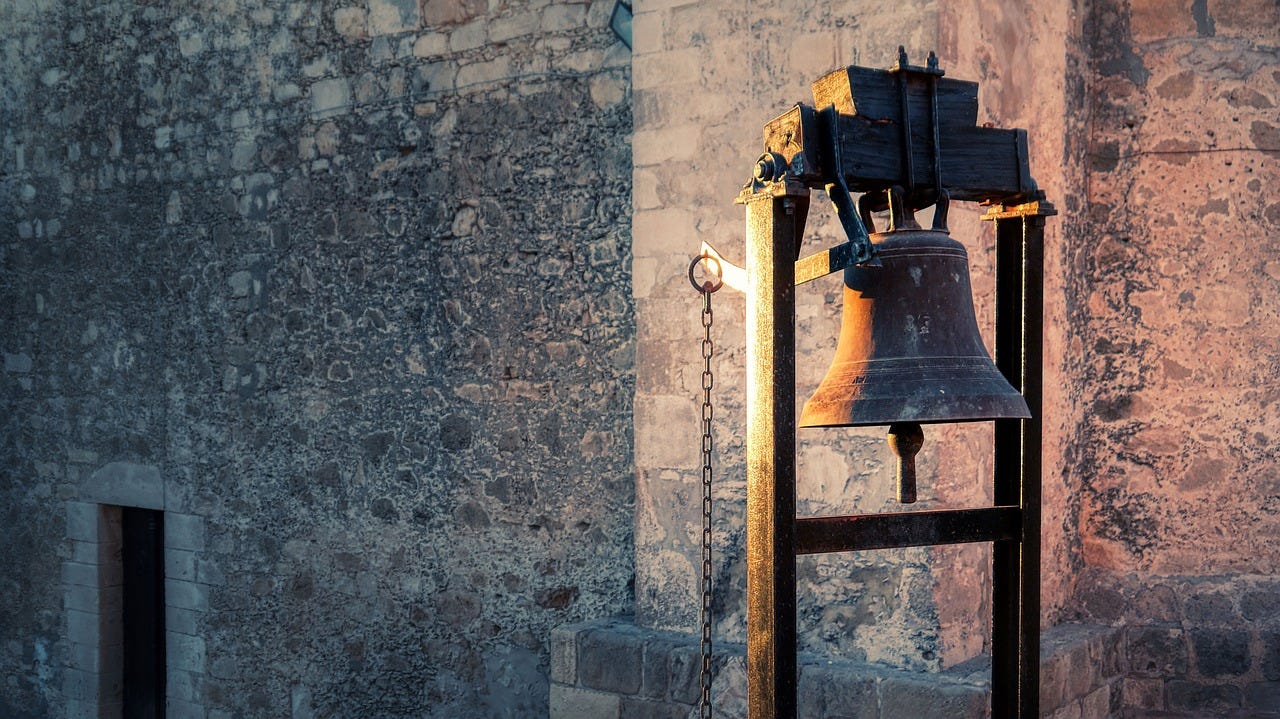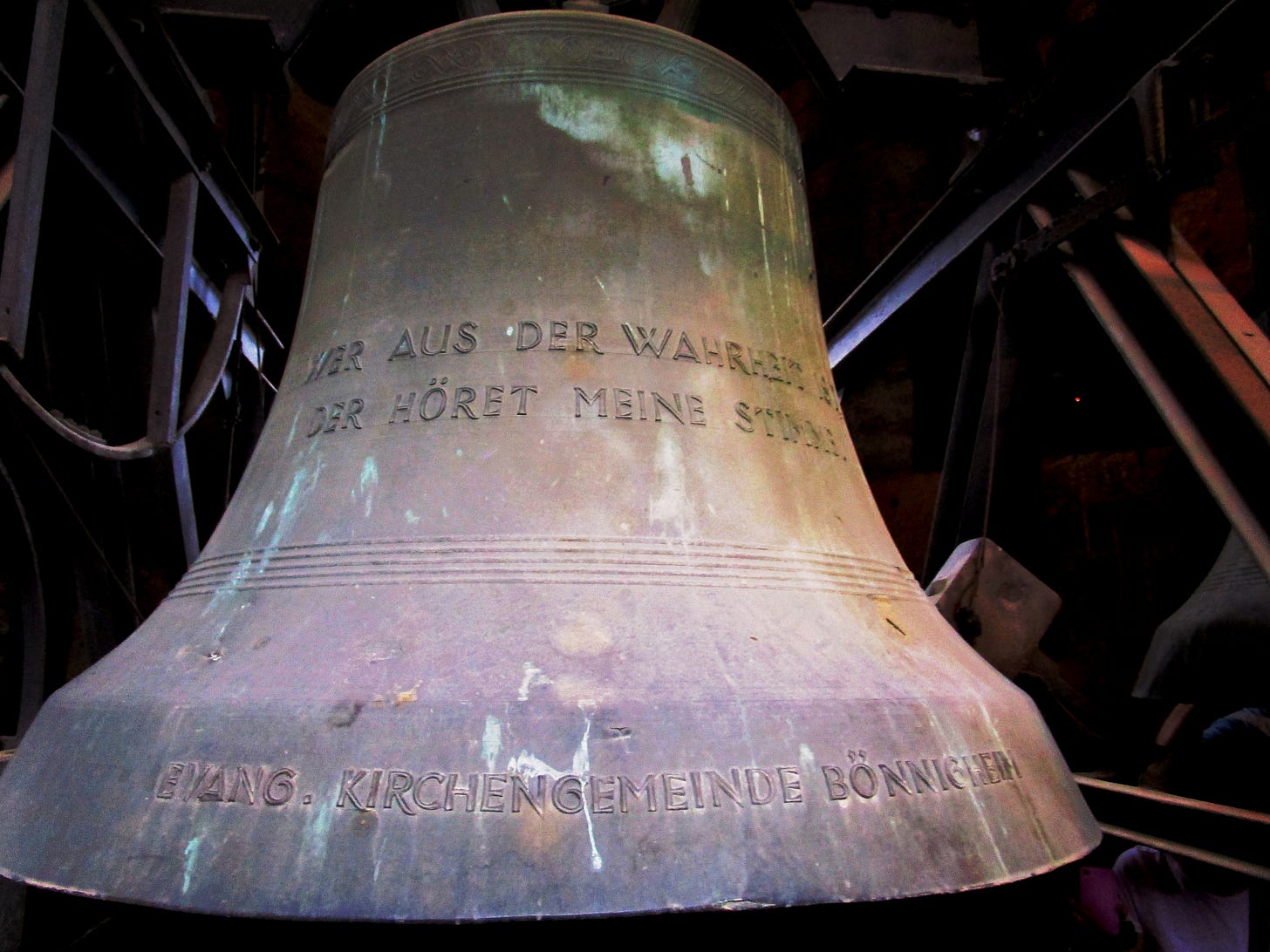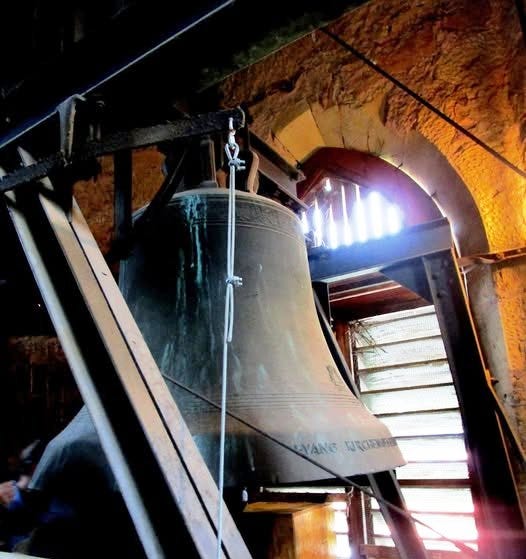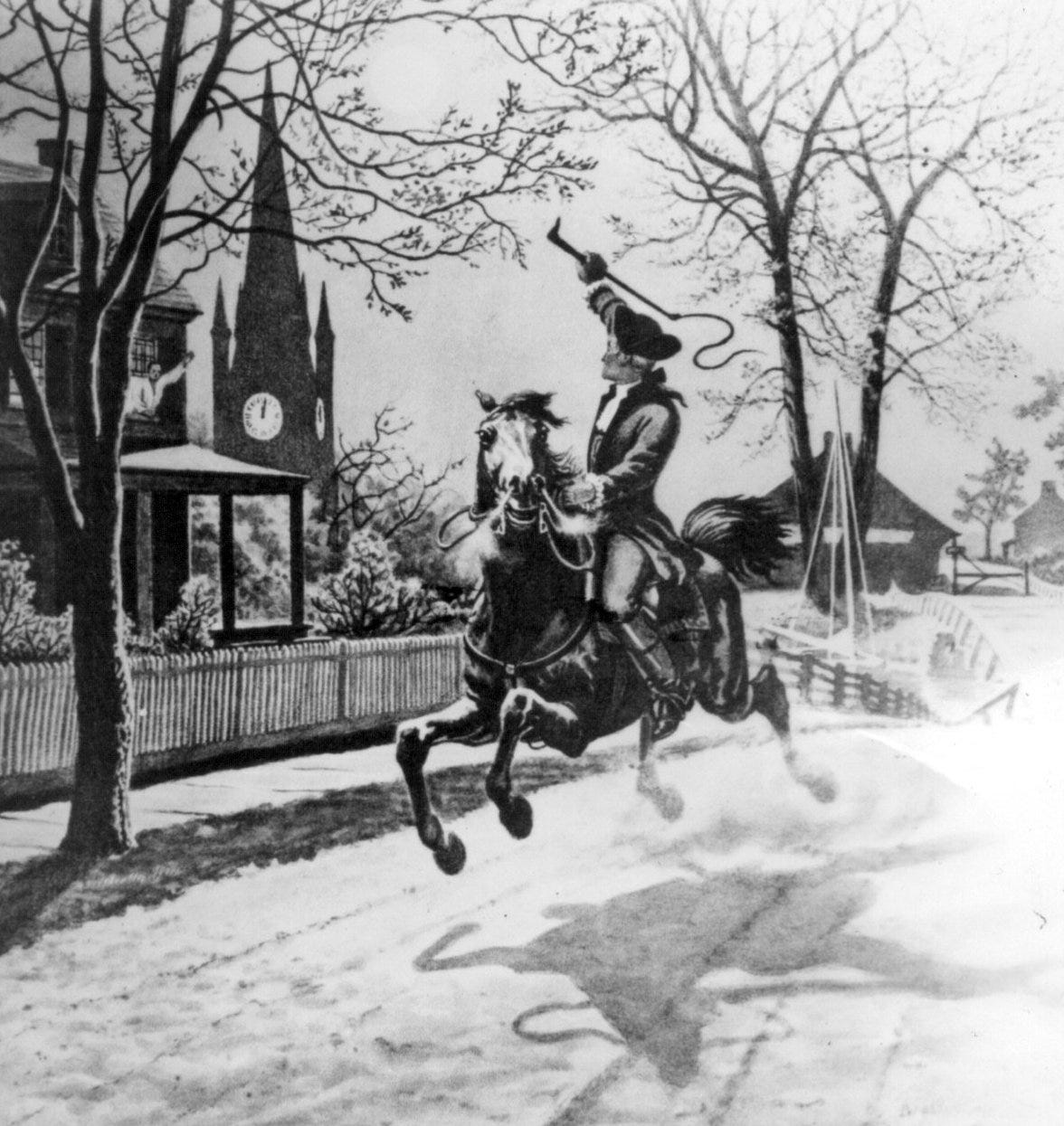Secret codes in Europe?
Well, sort of. European church bells are used to communicate much more than just the time. Some of those coded messages could easily elude American tourists. But having lived for 30 years in Germany, after growing up in the USA, I know the difference. And I can give you a few keys to decode the ciphers.
There is a well known movie in Europe – Italian and French-made, but dubbed into German – that illustrates the role church bells play in European culture better than anything else I know.
The 1952 film The Little World of Don Camillo features a Catholic priest in a northern Italian town who gets into a fist fight with his Communist mayor in the belfry of his church. As the two men push each other around, they trip and fall on the bell ropes. And all the bells up in the tower start resounding.
Out on the fields, the farmers pause, straighten their backs, and listen with alarm. What is wrong? For a moment, they stare at each other in puzzlement. (You can watch the scene here in the Italian original from 19:27 to 20:20.)
Mondo piccolo: Don Camillo (1952)
Normally, the town would then rush in to offer aid. That’s because bells ringing when they are not supposed to is an ancient form of an emergency alert. It is a warning and a call for help.
Medieval communication
Hours of the day
Before the invention of pocket watches and radios, towns communicated with their citizens via the church bell. The code of the bells can differ from town to town, but typically, the quarter hours are tolled, with one peal for a quarter till and past the hour, two peals for half past the hour, and full hours noted a short melody followed by a peal for each hour passed. Europe often uses 24 hour system, so 6:00 p.m., for instance, has 18 peals.
People used to tell time by the bells. In the investigation into the 1835 assassination of the mayor of my German town, the investigator asked a number of witnesses at what time they heard the gunshot. “The clock struck 10 after [the victim] arrived home,” said one witness. That was accepted as an accurate measurement of time.
You can read about this record-breaking historical true crime case, watch a short film about the murder, and read the first chapter of my book about it here.
Germany’s Archival Murder Mystery
One hundred eighty nine years ago today, the mayor of Bönnigheim – my German town – died. He was murdered.
Special times of the day
Although the tolling of the hours is not too different from what I used to know in the USA, the daily calls to prayer is where European church bell culture takes on a life of its own.
German church bells often peal for several minutes at special times of the day. This custom has its origin in the calls to prayer in a monastery. Outside monasteries, the bells only knell for prayer three to four times a day. But these bells have also taken on secular meanings.
In my town of Bönnigheim, the Frühglocke, or early bell, sounds out the note F at 6:00 a.m. It’s not just a call to prayer or laudes. It’s a wake-up call that hails back to an age before alarm clocks. And it goes on and on. I once lay in bed counting the number of peals at 6:00 a.m. and came up with 204. Think of the nursery rhyme Frère Jacques — morning bells are ringing!
Our early bell used to be loud enough to wake you up, but the church recently received a letter from a woman who was ill and complained that the bells woke her up. She needed to sleep. For her sake, the church muffled the 6:00 a.m. bells. Afterwards, a pile of letters arrived at the church office from people who noted the difference. Interestingly, 80% of them called for a return to tradition and wanted the loud morning bells back! As of yet, the church hasn’t un-muffled them.

Elf-Uhr-Lauten, or the 11:00 a.m. bells, resound the notes of F and A flat. Traditionally a Catholic call to pray the Angelus Domini, the Protestant Church now offers a book of its own prayers to say at that hour. But most people will tell you that predominate meaning is secular: Farmers who heard the 11:00 a.m. bells in the fields knew it was time to pack up and head home for lunch, and their wives knew it was time to start preparing it.
Death of Christ. The bells ring again at 3:00 p.m. on the note of B flat. This bell is supposed to remind Christians that it was the hour that Jesus died on the cross.
Einbruch der Dämmerung, or the twilight bells, knell again on F and A flat. For farmers out on the fields, this was the signal to return home.
Special events
If the daily bell schedule isn’t enough for you, fear not. There are a number of other events the church bells commemorate.
Church services. Perhaps the most well known is the call to worship services. Many people don’t know that German bells also ring while the Lord’s Prayer is recited. The idea is that people who cannot attend the service can at least pray along with part of it.
The bell with deepest tone is often reserved as the death bell. When someone in the congregation dies, the bell tolls at a specific time in that evening, assuming the notification of the death was passed on to the pastor and the sexton on time. If not, the death bell will knell the following evening. Once our the pastor was visiting us and suddenly asked me to open the window. “Someone passed away today,” he explained. “I want to hear if the sexton got my message about the death and went over to the church to toll the bell.” Sure enough, we heard the bell a few moments later.
Some communities follow special rules for the death bell that help identify the person who died. They peal three times three for a man and three times two for a woman. After a pause, the bell peals out the age of the deceased. That’s enough tantalizing information that many people will pause when the death bell tolls and try to figure out who it was. That has given me a deeper understanding of John Donne’s famous quotation, “Never send to know for whom the bell tolls; It tolls for thee.”.
There are also wedding bells, funeral bells, and baptism bells. Bönnigheim has a special baptism bell tuned to B flat.
Memorial bells. Some bells commemorate historical events. When I lived in Darmstadt, Germany, all the bells tolled at midnight on 11-12 November in memory of a 1944 WWII bombing in which 66,000 residents died. You can’t sleep through the cacophony of those bells. You’re not supposed to.
Emergencies
All the bells above come at expected times. The ones that don’t are the ones that catch people’s attention. They mean emergencies.
In the Middle Ages, it was the church bells that alerted a town to a fire and summoned the firefighters. Bells were used to call the fire department into action until the advent of modern communication systems. In war, bells might ring to warn of enemy invasion. During Paul Revere’s ride in 1775, it wasn’t just Revere that broadcast that the British were coming. The church bells rang too.
During the disastrous German floods of 2021, a monk in Wuppertal rang the church bells to warn people of the coming danger. In Ahrweiler, the church bells rang along with sirens and loud speaker announcements about the flood.
That’s probably where the English idioms “warning bells,” “ring the alarm,” and “set off alarm bells” come from. And it also explains why the farmers in the Don Camillo film were confused about the unexpected bells.

Do the church bells in your region have any coded messages? And have you ever encountered different customs on your travels? If so, please comment below. We’d love to hear about your experiences.








How interesting. Some of the messages I knew, others I didn't. I didn't realise that the musical key of the bells could even be saying something.
What a fascinating compendium! I had always wondered about the 11th hour bell and what it meant. Now I know.